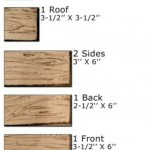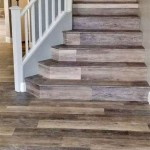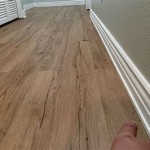How To Lay Tongue And Groove Porch Flooring
Laying tongue and groove porch flooring is a rewarding project that can significantly enhance the aesthetic appeal and functionality of a home's exterior. When installed properly, a tongue and groove porch floor offers a durable, weather-resistant, and visually pleasing surface that will last for years. This article provides a detailed guide on how to successfully install tongue and groove porch flooring, covering essential preparation steps, installation techniques, and key considerations for ensuring a professional and long-lasting result.
Before commencing the installation process, thorough planning and preparation are paramount. This includes accurately measuring the porch area, selecting the appropriate type of tongue and groove flooring, gathering necessary tools and materials, and carefully inspecting the subfloor for any potential issues. Neglecting these preliminary steps can lead to problems during installation and compromise the final outcome.
One of the first steps is to accurately measure the entire porch area where the flooring will be installed. Measurements should be taken at multiple points to account for any irregularities or discrepancies in the dimensions. These measurements will be used to calculate the total amount of flooring material required, including an allowance for waste due to cuts and fitting.
Choosing the right type of tongue and groove flooring is crucial for ensuring both durability and aesthetic appeal. Common options include pressure-treated lumber, which is resistant to rot and insect damage, and various types of hardwoods, such as mahogany or ipe, known for their natural beauty and weather resistance. The selection should be based on the local climate, the desired aesthetic, and the budget available for the project. It's also vital to confirm the wood is specifically designed for outdoor use. Check with local lumber yards, or the manufacturer, to confirm that the flooring selection is suitable for porches and exterior use.
Gathering the correct tools and materials is another essential step. A comprehensive list should include a measuring tape, a circular saw or miter saw for cutting the boards, a drill with various bits, a hammer or mallet, a tapping block to protect the tongue and groove edges, a level, a square, construction adhesive suitable for exterior use, stainless steel or galvanized screws, and safety glasses. Having all the necessary items readily available will streamline the installation process and minimize delays.
The subfloor, which is the underlying structure to which the porch flooring will be attached, must be thoroughly inspected. It should be structurally sound, clean, and properly sloped to allow for water runoff. Any damaged or deteriorated sections of the subfloor should be repaired or replaced before proceeding with the flooring installation. If the subfloor is not level, shims may be required to create a flat and even surface.
Preparing the Subfloor
The success of any porch flooring project hinges on the integrity and preparation of the subfloor. A properly prepared subfloor provides a stable and secure base for the flooring, ensuring that it remains level, durable, and resistant to moisture damage. This section outlines the critical steps involved in preparing the subfloor for tongue and groove porch flooring, including cleaning, leveling, and applying a moisture barrier.
Begin by thoroughly cleaning the subfloor to remove any dirt, debris, or existing coatings. A stiff brush, a vacuum cleaner, or a power washer can be used to achieve a clean surface. Pay particular attention to removing any loose nails or screws and scraping away any remnants of old adhesives or sealants. A clean subfloor promotes better adhesion of the new flooring material and prevents the formation of mold or mildew.
Next, inspect the subfloor for any signs of damage, such as rot, cracks, or warping. Damaged sections should be repaired or replaced to ensure structural integrity. Small cracks can be filled with epoxy or concrete patching compound, while more extensive damage may require replacing entire sections of the subfloor. Failure to address these issues can compromise the stability of the new flooring and lead to premature failure.
Ensuring that the subfloor is level is crucial for achieving a professional-looking and functional porch floor. Use a level to identify any high or low spots on the subfloor. Minor irregularities can be addressed by sanding down high spots or filling low spots with self-leveling compound. More significant level discrepancies may require the installation of shims to create a perfectly flat and even surface. Shims should be securely fastened to the subfloor using construction adhesive and screws.
Applying a moisture barrier is essential for protecting the subfloor and the new flooring from moisture damage. A layer of roofing felt or a waterproof membrane should be laid over the entire subfloor, overlapping the edges by several inches. This barrier will prevent water from seeping into the subfloor and causing rot, mold, or warping. The moisture barrier should be securely fastened to the subfloor using staples or nails.
Proper spacing between the subfloor boards is essential for allowing adequate drainage and preventing moisture buildup. Narrow gaps should be left between the boards to allow water to escape and air to circulate. These gaps can be created using spacers or shims during the installation process. Adequate spacing will help to ensure that the subfloor remains dry and free from rot.
Installation Techniques
The installation of tongue and groove porch flooring requires careful attention to detail and the use of proper techniques to ensure a secure, weather-resistant, and aesthetically pleasing result. This section outlines the key steps involved in the installation process, including laying the first row, securing the boards, and cutting around obstacles.
Start by laying the first row of tongue and groove boards along the longest straight edge of the porch. Ensure that the tongue side of the board faces outward. Use a level to ensure that the first row is perfectly straight and even. This row will serve as the foundation for the rest of the flooring, so its accuracy is critical. Any deviation from the straight line in the first row will accumulate in subsequent rows, leading to an uneven and unprofessional finish.
Secure the first row of boards to the subfloor using construction adhesive and stainless steel or galvanized screws. Apply a bead of construction adhesive to the back of each board before placing it on the subfloor. Then, drive screws through the face of the board and into the subfloor at regular intervals. The screws should be countersunk to prevent them from protruding above the surface of the flooring. Select screws that are long enough to penetrate both the flooring and the subfloor, ensuring a secure and lasting bond. Predrilling pilot holes is highly recommend, especially with hardwoods, to ensure that the wood does not crack.
As you proceed with subsequent rows, align the tongue of each board with the groove of the previous board. Gently tap the boards together using a tapping block and a hammer or mallet. The tapping block will protect the edges of the tongue and groove from damage during the tapping process. Ensure that the boards are tightly interlocked to create a seamless and watertight surface. Using construction adhesive on the tongue and groove edges can help to ensure a stronger and water-tight bond.
When encountering obstacles such as posts, railings, or steps, carefully measure and cut the boards to fit around them. Use a square to mark the cutting lines accurately, and use a circular saw or miter saw to make precise cuts. Leave a small gap around the obstacles to allow for expansion and contraction of the wood due to changes in temperature and humidity. This gap can be filled with a flexible sealant to prevent water from seeping underneath the flooring. A jigsaw might be useful for making more intricate cuts around posts or other shapes.
Maintain a consistent pattern throughout the installation process to achieve a visually appealing result. Stagger the end joints of the boards to create a random or repeating pattern. This will not only enhance the aesthetic appeal of the flooring but also increase its structural integrity. Avoid placing joints close together in adjacent rows, as this can create weak spots in the flooring.
Regularly check the alignment of the boards using a level and a square to ensure that they remain straight and even. Make any necessary adjustments as you proceed to prevent the accumulation of errors. A small deviation in one row can quickly escalate into a significant problem if left uncorrected. Periodic checks will help to ensure that the finished floor is level, even, and visually appealing.
Key Considerations for Longevity
To ensure the longevity and performance of a tongue and groove porch floor, several key considerations must be taken into account. These include proper ventilation, regular maintenance, and appropriate sealing. Neglecting these aspects can significantly reduce the lifespan of the flooring and compromise its aesthetic appeal.
Adequate ventilation is crucial for preventing moisture buildup underneath the porch floor. Ensure that there is sufficient airflow beneath the porch to allow for proper evaporation of moisture. This can be achieved by leaving adequate spacing between the ground and the underside of the porch, installing ventilation screens, or using a combination of both. Good ventilation helps to prevent rot, mold, and warping, which can compromise the structural integrity of the flooring.
Regular maintenance is essential for preserving the appearance and durability of the porch floor. Sweep or vacuum the floor regularly to remove dirt, debris, and leaves, which can trap moisture and promote the growth of mold and mildew. Periodically wash the floor with a mild soap and water solution, using a soft brush or mop to scrub away any stains or dirt. Avoid using harsh chemicals or abrasive cleaners, as these can damage the finish.
Sealing the porch floor with a high-quality sealant is crucial for protecting it from the elements. Choose a sealant that is specifically designed for exterior use and is compatible with the type of wood used for the flooring. Apply the sealant according to the manufacturer's instructions, paying particular attention to the joints and edges of the boards. A good sealant will help to prevent water from penetrating the wood, reducing the risk of rot, warping, and cracking. Consider re-sealing the flooring every one to two years, or as needed, to maintain its protective barrier.
Inspect the porch floor regularly for any signs of damage, such as cracks, splinters, or loose boards. Address any issues promptly to prevent them from escalating into more significant problems. Small cracks can be filled with wood filler, while loose boards should be re-secured with screws or construction adhesive. Replacing damaged boards may be necessary if the damage is extensive.
Protect the porch floor from excessive exposure to sunlight, which can cause the wood to fade or crack. Consider installing awnings or shades to reduce the amount of direct sunlight that reaches the floor. Alternatively, use a sealant with UV protection to help prevent fading and cracking. Regularly cleaning the floor to remove dirt and debris can also help to protect the wood from sun damage.
By following these key considerations, one can ensure that the tongue and groove porch floor remains attractive, durable, and functional for many years to come. Proper installation, regular maintenance, and appropriate sealing are essential for maximizing the lifespan of the flooring and protecting it from the damaging effects of moisture, sunlight, and wear.

Tongue And Groove Porch Flooring Installation Guides

Fixing A Rotten Tongue And Groove Porch Floor The Craftsman Blog

How To Install Tongue And Groove Porch Flooring Home Painters

Tongue And Groove Porch Flooring Installation Guides

How To Install Porch Floors 3

How To Install Tongue And Groove Porch Flooring Home Painters

Tongue And Groove Porch Flooring Installation Guides

Fixing A Rotten Tongue And Groove Porch Floor The Craftsman Blog

How To Install Porch Floors 2

Fixing A Rotten Tongue And Groove Porch Floor The Craftsman Blog
Related Posts








